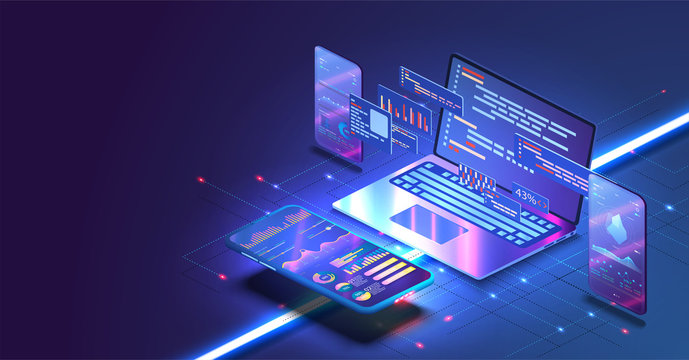The Impact of Technology in Education

Technology has profoundly transformed education, influencing how students learn, teachers instruct, and educational institutions operate. Its integration into classrooms has introduced both opportunities and challenges, reshaping the educational landscape in multifaceted ways. From enhancing learning experiences to addressing concerns about academic integrity and screen time, technology continues to redefine the educational sector.
Enhancing Learning Experiences
One of the most significant impacts of technology in education is its ability to make learning more interactive and accessible. Digital tools, such as Web 2.0 platforms, learning management systems (LMS), and multimedia content, have enabled students to engage in collaborative learning. Blogs and wikis, for example, provide spaces where students can share ideas, participate in discussions, and create content that enhances their understanding of subjects. These platforms also allow students to showcase their work to a broader audience, boosting their communication skills and confidence.
Moreover, multimedia content, including podcasts, vodcasts, and interactive videos, enables students to learn at their own pace. This flexibility is particularly beneficial for students with different learning styles, as it allows them to review content multiple times and engage with materials in ways that suit their preferences. Additionally, gamified learning applications have gained popularity for making education more engaging. Platforms like Kahoot, Quizizz, and Duolingo use interactive quizzes and challenges to reinforce learning while maintaining student motivation.
Personalized Education and AI Integration
The advent of artificial intelligence (AI) and machine learning in education has revolutionized personalized learning experiences. Adaptive learning software, such as DreamBox and Knewton, tailors educational content to meet the unique needs of each student, adjusting the difficulty level based on their progress. This individualized approach ensures that students receive appropriate challenges and support, ultimately promoting mastery of subjects.
AI-powered chatbots and virtual tutors also provide students with real-time assistance, helping them with queries outside of classroom hours. These tools can analyze a student’s learning patterns and suggest areas for improvement, making the learning process more efficient. Additionally, AI-driven analytics help teachers identify struggling students early, allowing for timely interventions and personalized support.
Challenges to Critical Thinking
Despite its advantages, technology poses challenges, particularly concerning critical thinking skills. The increasing reliance on AI tools for assignments, such as AI-generated essays and automated research summaries, has raised concerns about students bypassing essential cognitive processes. While AI tools can assist in writing and research, over-reliance on them can hinder analytical skills, creativity, and problem-solving abilities.
Educators have observed that students using AI-generated content often make superficial improvements to their work rather than engaging in deeper analysis. To counter this, schools and universities are implementing strategies to encourage original thought and critical engagement. Methods such as open-ended questioning, Socratic seminars, and project-based learning help students develop analytical skills that AI cannot replicate.
Addressing Academic Integrity
The rise of AI-generated content has also impacted academic integrity. Universities have reported an increase in cases where students misuse AI tools, leading to concerns about plagiarism and dishonesty. Some institutions have responded by adopting advanced plagiarism detection software that can identify AI-generated text, such as Turnitin’s AI detection system.
Furthermore, many educators advocate for reimagining assessments to focus less on traditional essays and exams and more on practical applications, presentations, and oral examinations. This shift can ensure that students genuinely engage with learning materials rather than relying on AI to complete their work. Some universities have already started integrating AI ethics courses into their curricula to educate students on responsible AI use.
Balancing Screen Time
The increased use of digital devices in education has led to concerns about excessive screen time and its impact on students’ well-being. Studies have shown that prolonged screen exposure can lead to issues such as digital eye strain, reduced attention spans, and difficulties in reading comprehension.
In response, some schools have implemented policies to limit screen time during school hours. For instance, schools in various countries have introduced "blackout" periods, where students must put away their devices and engage in traditional learning methods, such as reading from textbooks or participating in hands-on activities. Additionally, digital well-being apps, such as Freedom and Forest, help students manage their screen time and stay focused during study sessions.
Revitalizing Hands-On Learning
As technology continues to dominate education, there is a growing emphasis on hands-on learning experiences. Vocational education programs, maker spaces, and experiential learning opportunities are gaining popularity as alternatives to purely digital learning. Programs in construction, automotive repair, and culinary arts provide students with practical skills that are highly valued in the workforce.
Maker spaces, which are collaborative workspaces equipped with tools for hands-on projects, have also emerged in schools and libraries. These spaces encourage students to engage in STEM (Science, Technology, Engineering, and Mathematics) activities, fostering creativity and problem-solving skills. By combining digital tools with hands-on experiences, educators can create a balanced learning environment that prepares students for a variety of career paths.
Conclusion
Technology's impact on education is profound and multifaceted, offering numerous opportunities for enhanced learning while also presenting challenges that require careful management. The integration of digital tools has made learning more interactive, personalized, and accessible, yet it has also raised concerns about academic integrity, critical thinking, and screen time.
To maximize the benefits of technology while mitigating its drawbacks, educational institutions must adopt a balanced approach. This includes fostering critical thinking, implementing responsible AI use, managing screen exposure, and ensuring that students engage in hands-on learning experiences. By striking this balance, educators can equip students with the skills needed to navigate the complexities of the modern world while leveraging technology to enhance their learning journey.
Note: IndiBlogHub features both user-submitted and editorial content. We do not verify third-party contributions. Read our Disclaimer and Privacy Policyfor details.



